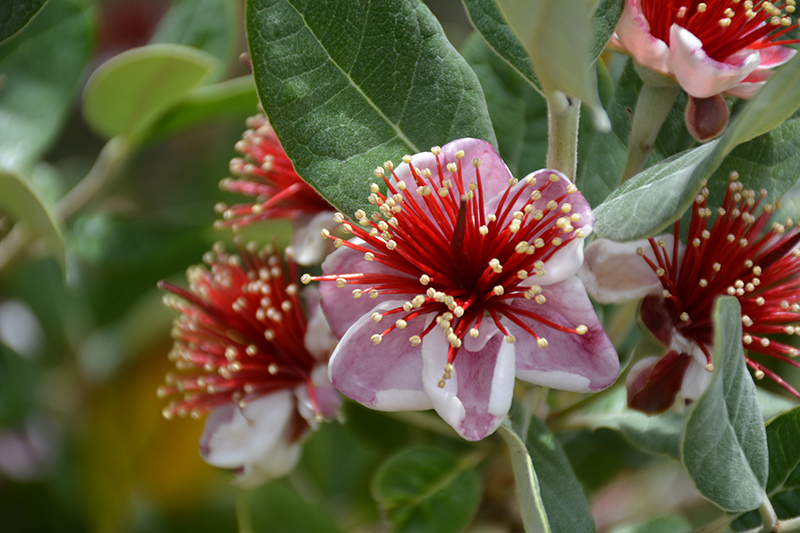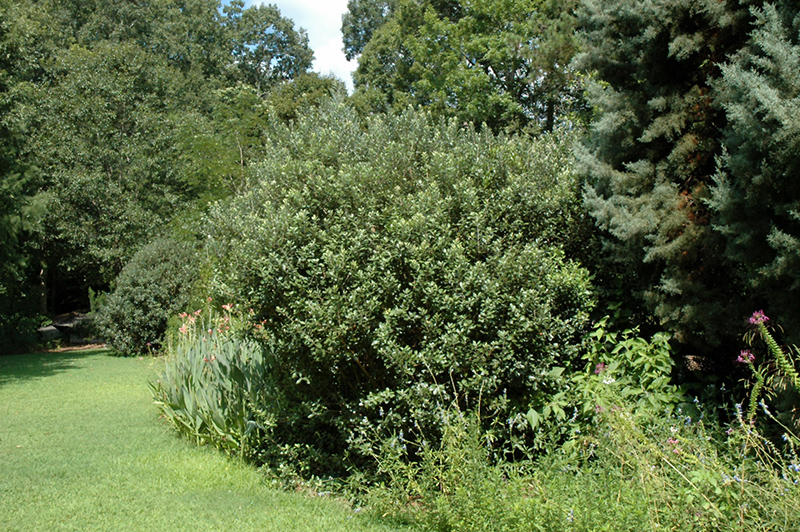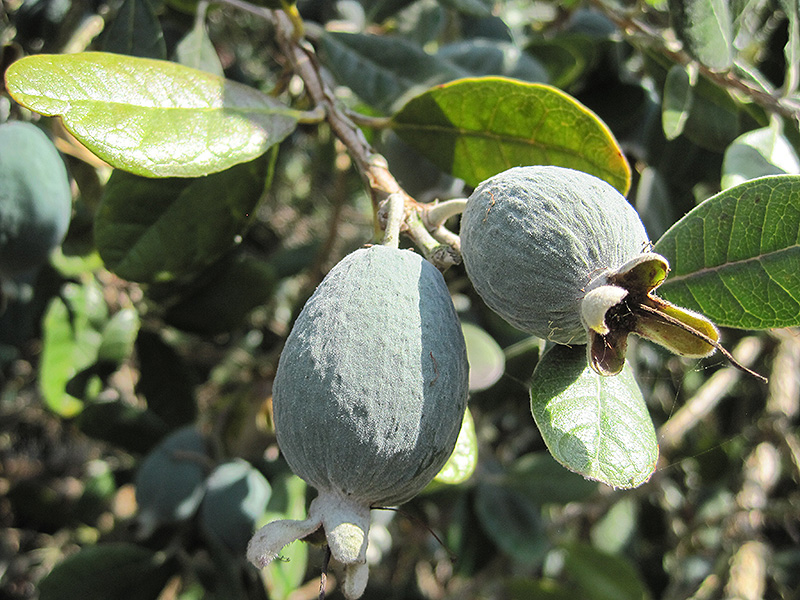Height: 15 feet
Spread: 15 feet
Sunlight:
![]()
![]()
Hardiness Zone: 8a
Other Names: Feijoa, Guavasteen
Description:
A large fruiting evergreen shrub that can be maintained as a small tree; a sprawling plant used primarily in landscapes; produces showy red and white flowers in spring and edible fruit in fall; great for screening; drought tolerant
Edible Qualities
Pineapple Guava is a large shrub that is commonly grown for its edible qualities, although it does have ornamental merits as well. It produces green oval fruit (technically 'drupes') with creamy white flesh which are typically harvested when mature. The fruits have a sweet taste with a gritty texture and a pleasant fragrance.
The fruit are most often used in the following ways:
- Fresh Eating
- Cooking
- Preserves
Features & Attributes
Pineapple Guava features showy white pincushion flowers with pink overtones and red anthers at the ends of the branches from late spring to early summer. It has dark green foliage with gray undersides which emerges light green in spring. The fuzzy oval pinnately compound leaves remain dark green throughout the winter. The fruits are showy green drupes carried in abundance from early summer to mid fall.
This is a multi-stemmed evergreen shrub with an upright spreading habit of growth. Its average texture blends into the landscape, but can be balanced by one or two finer or coarser trees or shrubs for an effective composition. This plant will require occasional maintenance and upkeep, and is best pruned in late winter once the threat of extreme cold has passed. It is a good choice for attracting birds and bees to your yard. Gardeners should be aware of the following characteristic(s) that may warrant special consideration;
- Messy
- Spiny
Aside from its primary use as an edible, Pineapple Guava is sutiable for the following landscape applications;
- Accent
- Hedges/Screening
- General Garden Use
- Windbreaks and Shelterbelts
- Orchard/Edible Landscaping
- Container Planting
Planting & Growing
Pineapple Guava will grow to be about 15 feet tall at maturity, with a spread of 15 feet. It has a low canopy with a typical clearance of 1 foot from the ground, and is suitable for planting under power lines. It grows at a medium rate, and under ideal conditions can be expected to live for 40 years or more. While it is considered to be somewhat self-pollinating, it tends to set heavier quantities of fruit with a different variety of the same species growing nearby.
This shrub can be integrated into a landscape or flower garden by creative gardeners, but is usually grown in a designated edibles garden. It does best in full sun to partial shade. It does best in average to evenly moist conditions, but will not tolerate standing water. It may require supplemental watering during periods of drought or extended heat. It is not particular as to soil pH, but grows best in sandy soils. It is somewhat tolerant of urban pollution. This species is not originally from North America. It can be propagated by cuttings.
Pineapple Guava is a good choice for the edible garden, but it is also well-suited for use in outdoor pots and containers. Its large size and upright habit of growth lend it for use as a solitary accent, or in a composition surrounded by smaller plants around the base and those that spill over the edges. It is even sizeable enough that it can be grown alone in a suitable container. Note that when grown in a container, it may not perform exactly as indicated on the tag - this is to be expected. Also note that when growing plants in outdoor containers and baskets, they may require more frequent waterings than they would in the yard or garden.
Disclaimer - This Plant Finder tool is an online resource representing many of the varieties that we carry over the course of the season, and is intended for informational purposes only. Inventory varies seasonally, so we cannot guarantee that every plant will be in stock at all times - please contact the store directly for current availability. It does not include our entire selection of plants, so be sure to visit our store to see varieties that may not be represented on this list.



